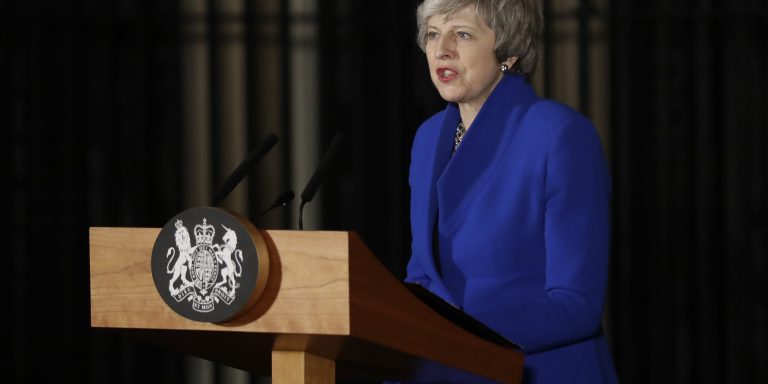INTELBRIEF
January 18, 2019
IntelBrief: May Survives a Vote of ‘No Confidence,’ but What Next for Brexit?

- On January 16, British Prime Minister Theresa May survived a no-confidence vote in Parliament.
- The vote came one day after a historic margin overwhelmingly rejected the Prime Minister’s Brexit plan.
- There are now 70 days until the U.K. leaves the European Union and the details of this complex foreign policy issue are still undecided.
- Next week, Prime Minister May will unveil a ‘Plan B,’ and Parliament will then vote again on January 29.
.
scenario since the process began. Now, with 70 days until the U.K. is set to leave the European Union (EU), the British government and people remain bitterly divided—not just on how to leave the EU but whether or not to do so at all. The political turmoil and economic uncertainty have reached unprecedented levels. The issue has been exacerbated by unrealistic demands, which started at the beginning of a two-year process in which politicians convinced voters that the U.K. possessed leverage and could essentially dictate its terms to the EU, all while maintaining the economic benefits of borderless trade without having to compromise on any of the other aspects that this historic divorce would entail. The Russian disinformation machine has been a major culprit in promoting numerous Brexit-related conspiracies and half-truths.
On January 15, Parliament voted on what was billed as the final offer by Prime Minister May. Following months of negotiations with EU officials that predictably failed to achieve the demands set by those who voted ‘Leave,’ Prime Minister May asked Parliament to approve the plan, which still left contentious issues such as the border between the Republic of Ireland and Northern Ireland unresolved. By a tally of 432 votes against and only 202 votes for, the vote was a historic defeat. The 230-vote margin of defeat is the largest ever.
Seizing on the setback, Labour leader Jeremy Corbyn tabled a quick vote of no confidence that was held on January 16. Prime Minister May narrowly survived the vote, 325 to 306, with the majority voting to keep the leader of the current government just one day after resoundingly rejecting the issue that has come to define the current government. The political chaos is likely to increase in the coming weeks. Even if a new deal is approved on January 29, it still has to be approved by the EU, which has little interest in renegotiating what it had exhaustively worked out already. The EU also has little interest in easing the departure of one of its largest member states, rightly fearing that a smooth transition for the U.K. would encourage other states, including those experiencing populist waves such as Italy or Hungary, to follow suit.
Prime Minister May must now devise and then submit a new ‘Plan B’ by January 21, with Parliament voting again on January 29. May already faces immense challenges just in presenting a revised deal that stands any reasonable chance of success. Labour has said it will not participate in any ‘cross-party’ talks unless the Prime Minister takes the possibility of a ‘no-deal’ exit off the table—a no deal or ‘hard’ exit has long been the unthinkable option, but it now seems like a realistic possibility. Other officials are demanding a second referendum, which Prime Minister May has also rejected out of hand. Recent polls suggest that if a second ‘Leave or Remain’ referendum was held, ‘Remain’ would win by a sizable margin. The original vote in 2016 had ‘Leave’ winning 51.8% and ‘Remain’ garnering 48.1%. Other options include an extension of the Article 50 exit deadline and even the idea that the U.K. can withdraw its Article 50 request to leave the EU. The Prime Minister has rejected all of these, putting everything into a new deal-or-no deal option by March 29.
.
For tailored research and analysis, please contact: info@thesoufancenter.org
[video width="960" height="540" mp4="https://thesoufancenter.org/wp-content/uploads/2019/01/IB-0118.mp4" poster="https://thesoufancenter.org/wp-content/uploads/2019/01/AP_19016796263615.jpg"][/video]